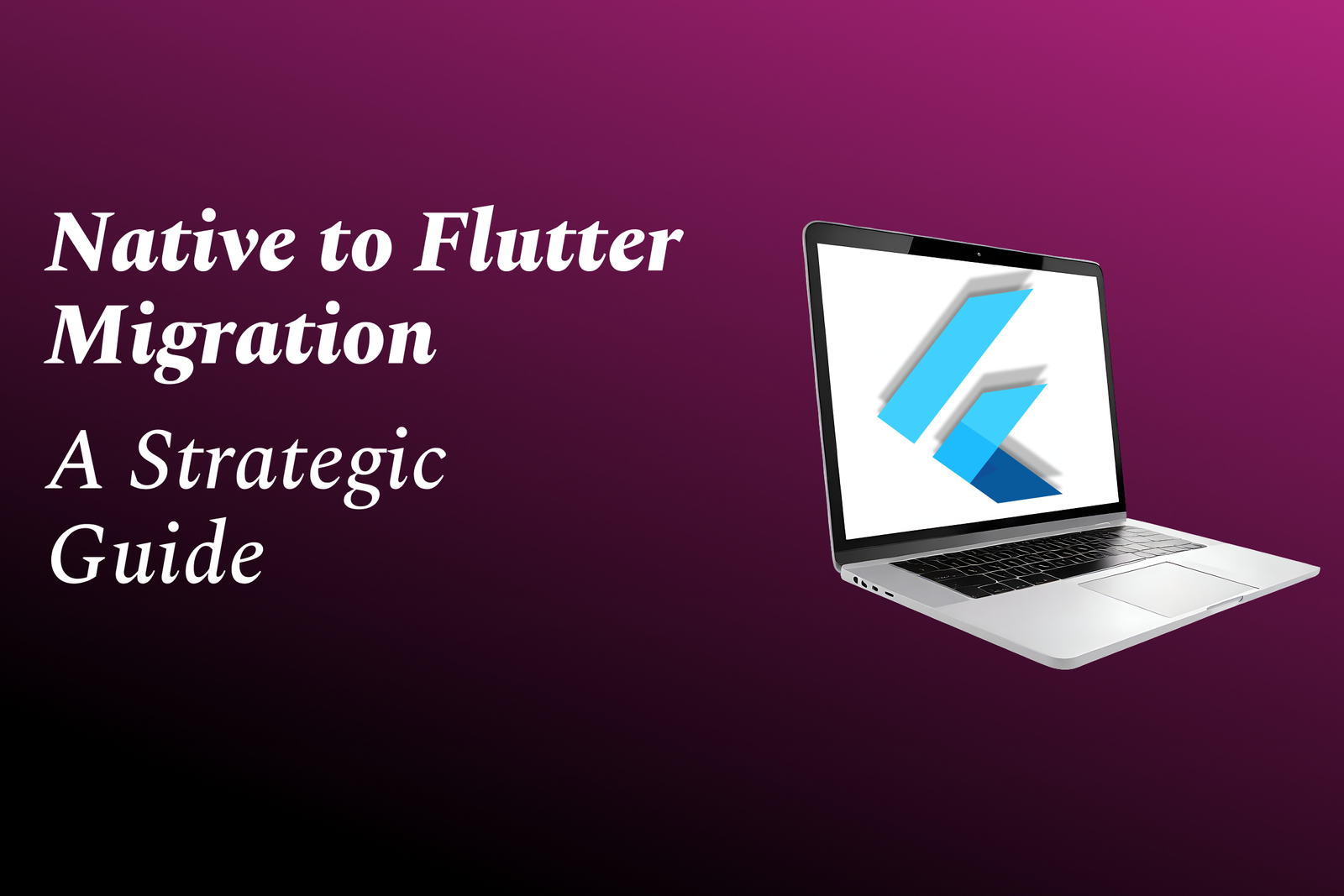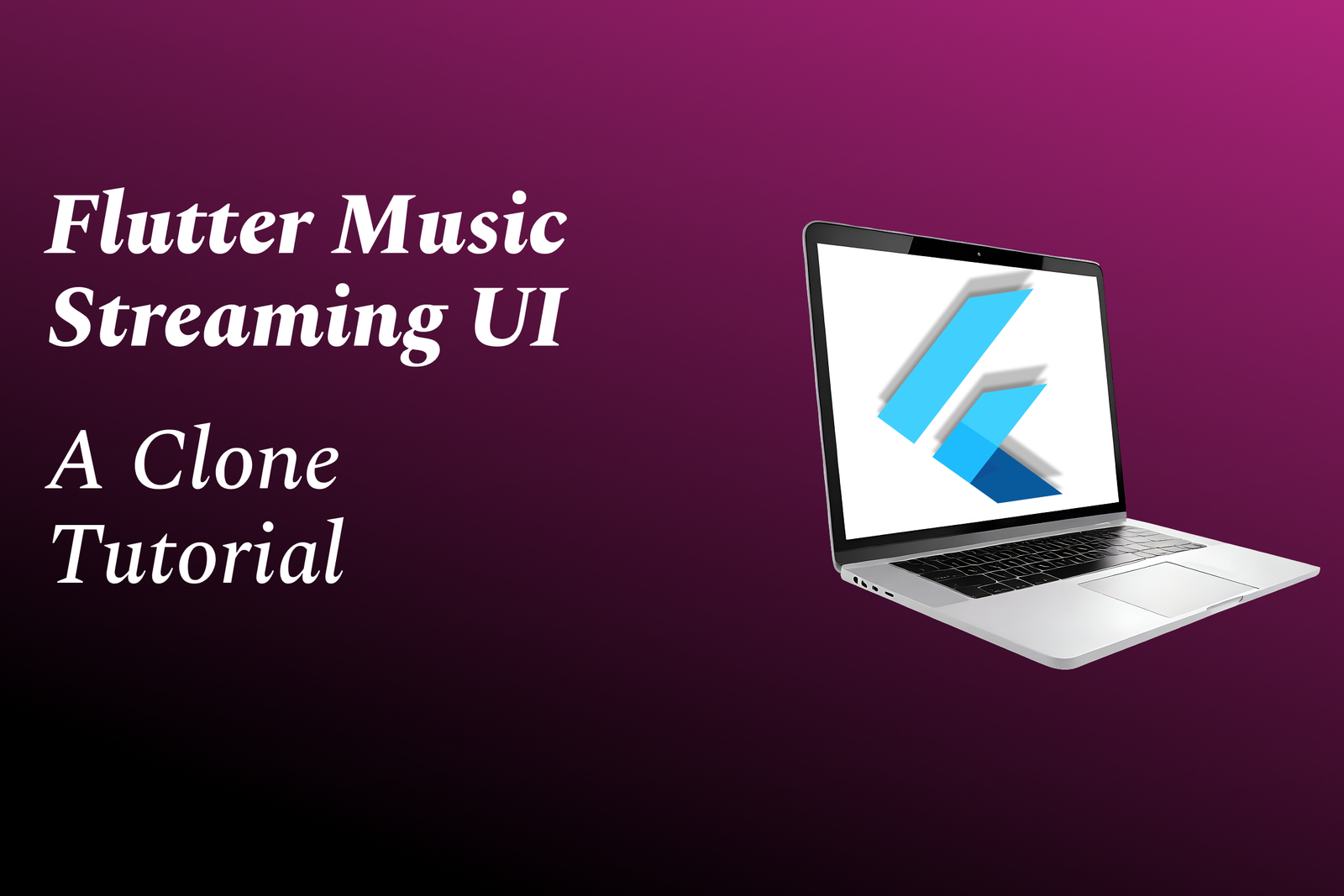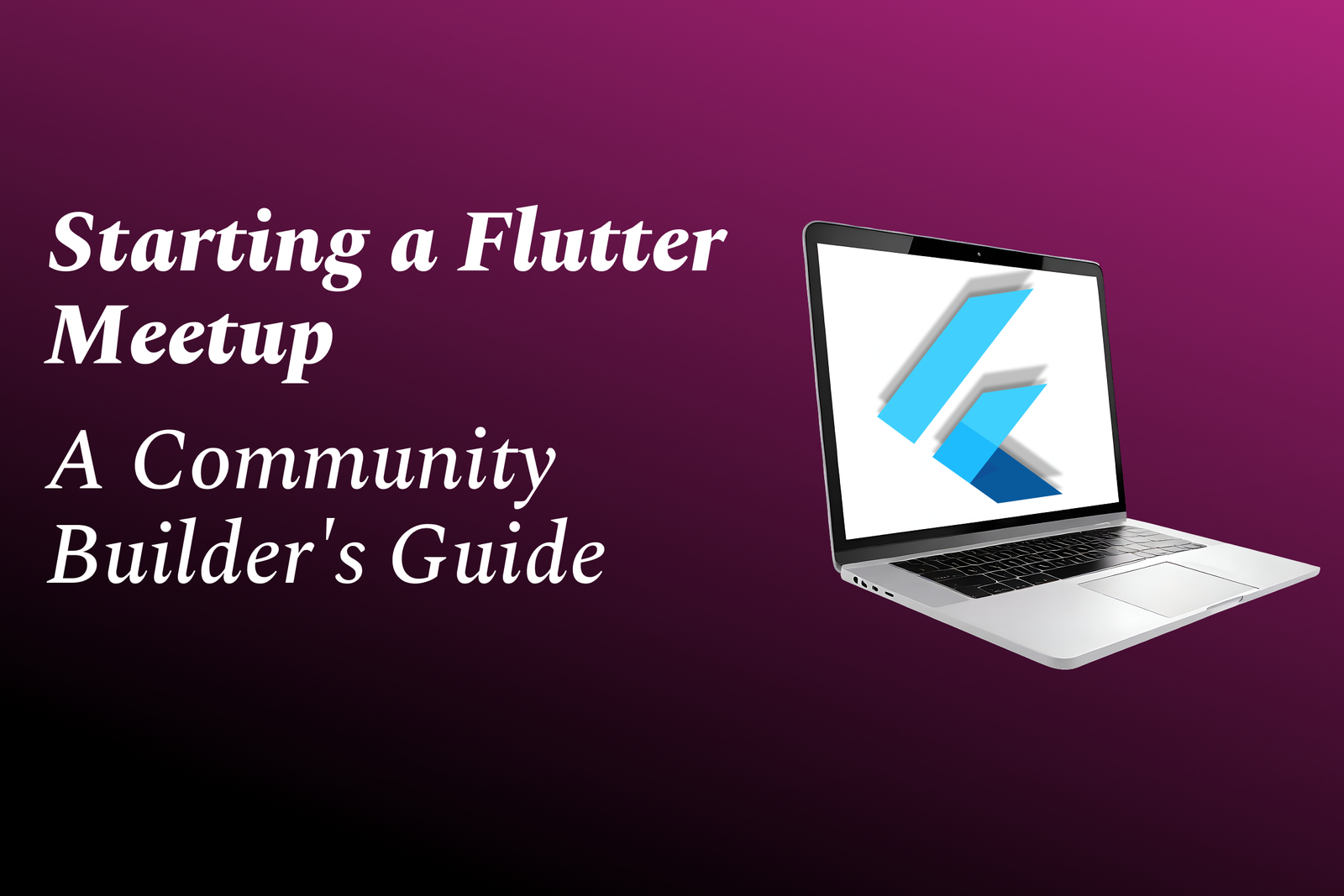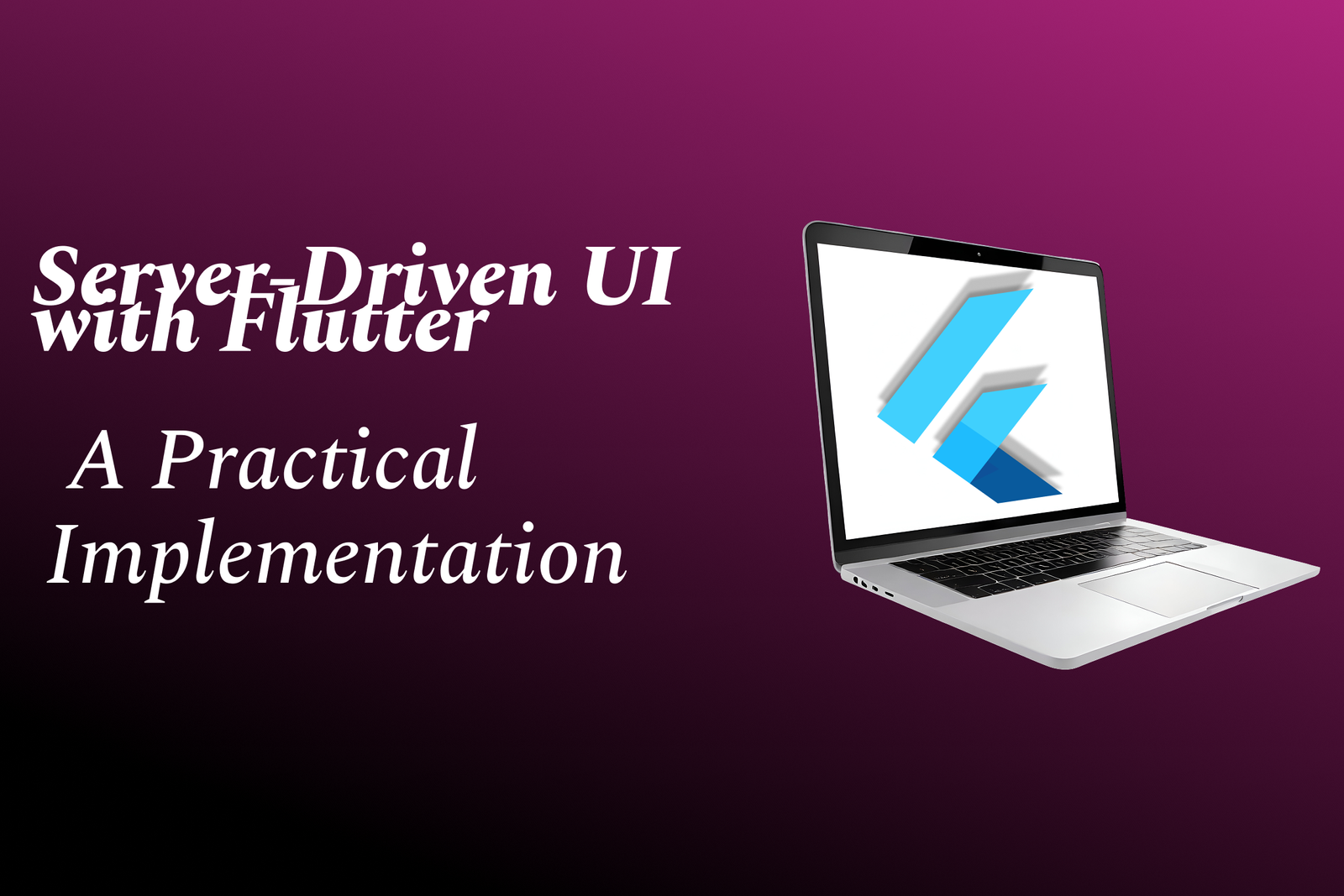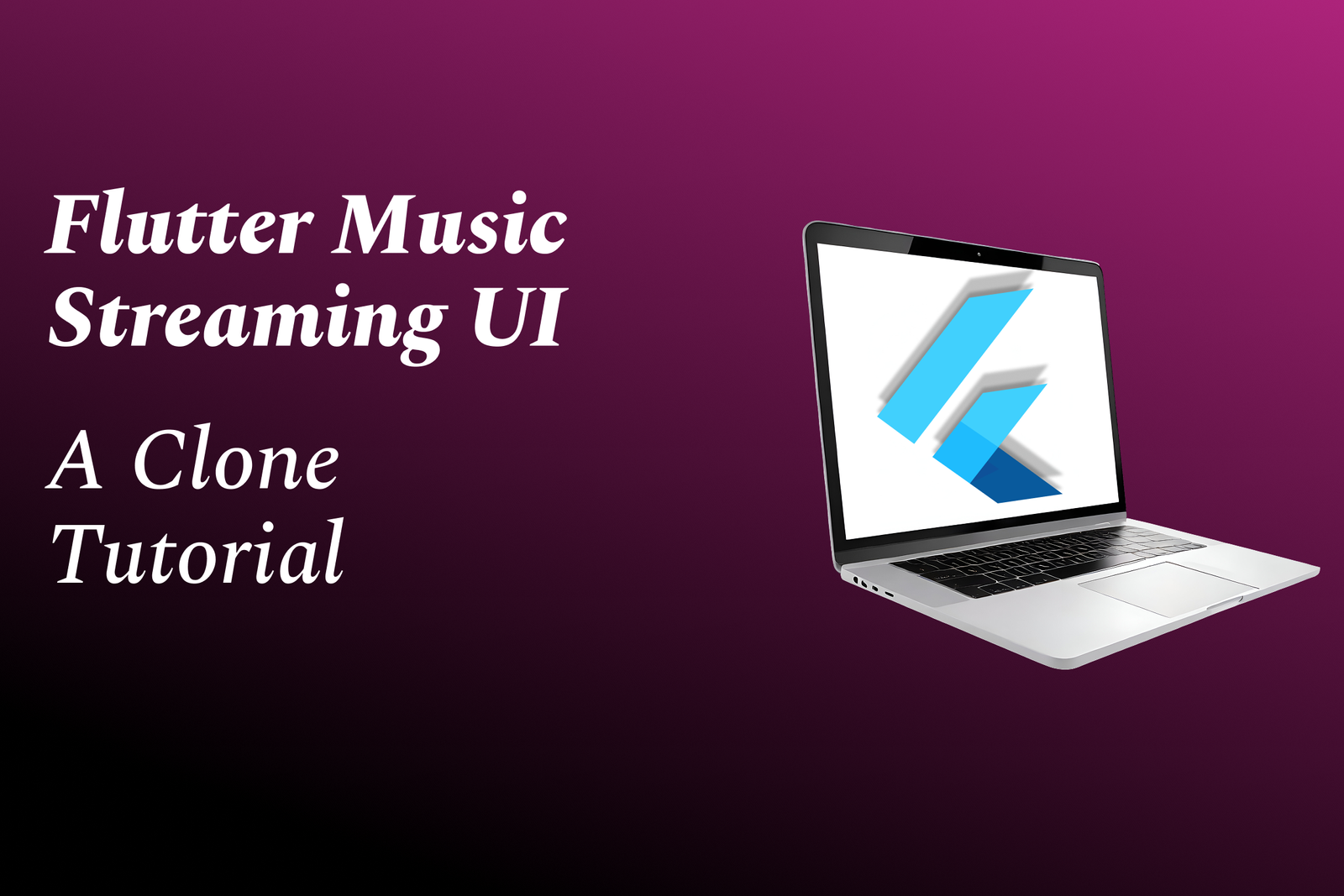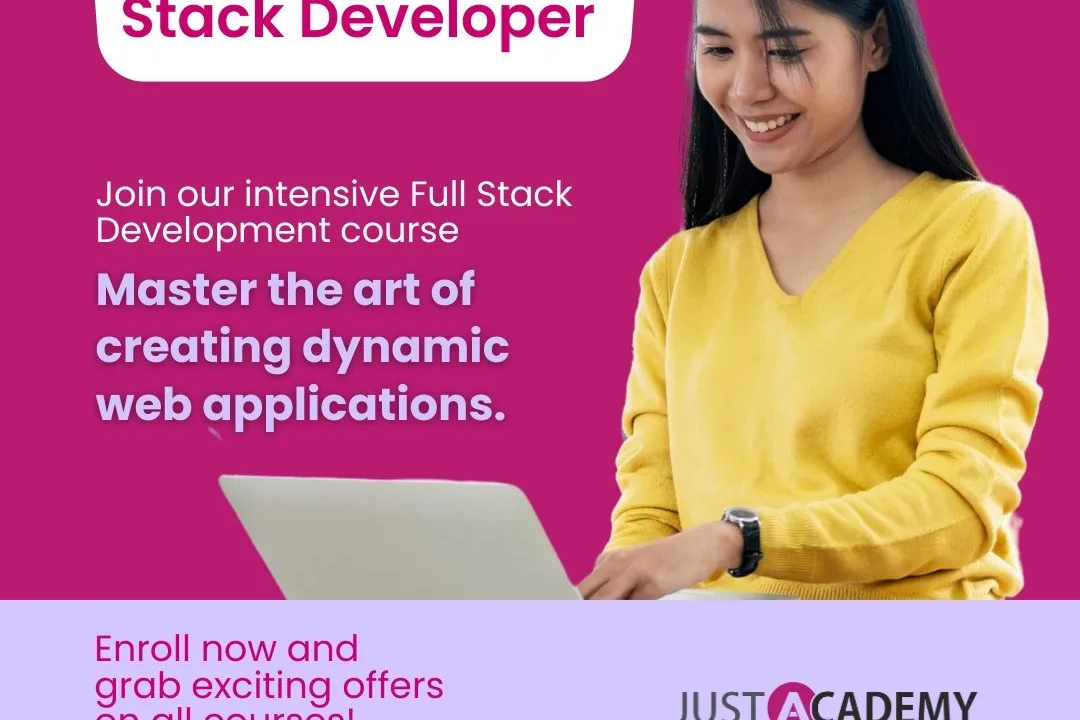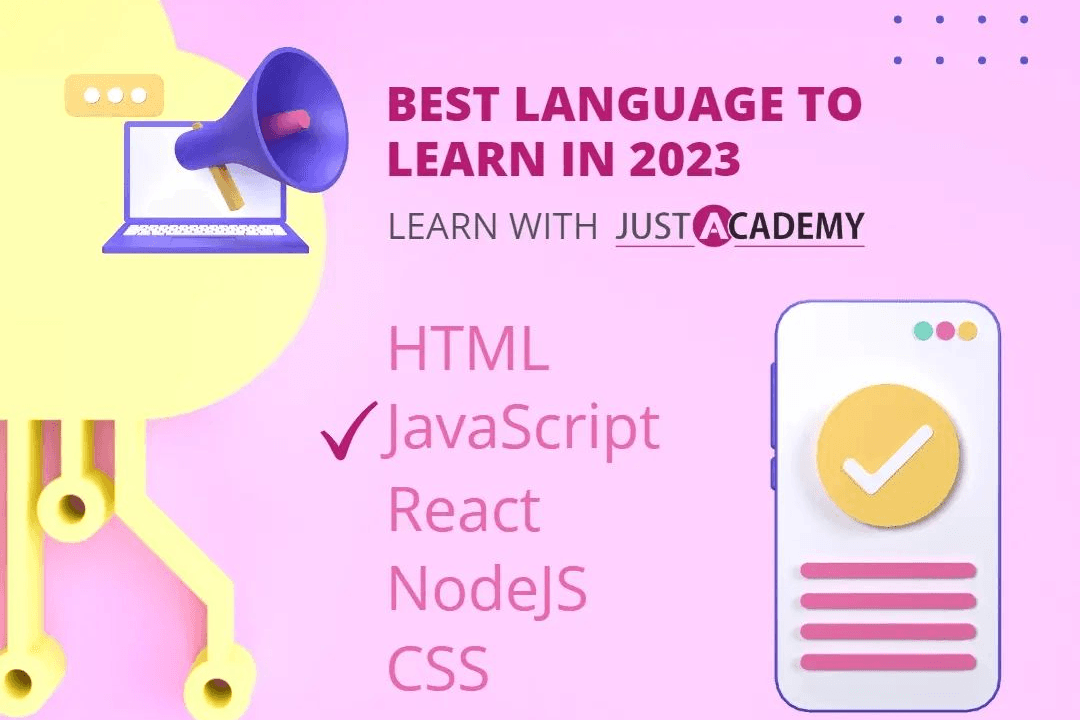Native To Flutter Migration: A Strategic Guide
JustAcademy's "Native to Flutter Migration: A Strategic Guide" is a concise roadmap for transitioning legacy iOS and Android apps to a single Flutter codebase, outlining practical steps — assessment, prioritization, incremental rewrites with native bridges, automated testing, and performance tuning — to minimize risk and downtime. It explains how an incremental approach preserves functionality while enabling a unified, consistent UI, faster development cycles via hot reload, access to Flutter's plugin ecosystem, and lower long‑term maintenance costs, making migration predictable and scalable for engineering teams.
Native To Flutter Migration: A Strategic Guide
JustAcademy's “Native to Flutter Migration: A Strategic Guide” explains how moving legacy iOS and Android apps to a single Flutter codebase reduces long‑term maintenance, speeds feature delivery with hot reload and a unified UI, and lowers development costs by consolidating teams and tooling. By advocating an incremental, risk‑aware approach—assessing components, prioritizing features, using native bridges where needed, and applying automated testing—the guide helps teams preserve existing functionality while gradually reaping Flutter’s performance, plugin ecosystem, and faster iteration benefits, making migration predictable and scalable.
To Download Our Brochure: **https://www.justacademy.co/download-brochure-for-free
**
Message us for more information: **https://api.whatsapp.com/send?phone=919987184296
**
JustAcademy's “Native to Flutter Migration: A Strategic Guide” explains how moving legacy iOS and Android apps to a single Flutter codebase reduces long‑term maintenance, speeds feature delivery with hot reload and a unified UI, and lowers development costs by consolidating teams and tooling. By advocating an incremental, risk‑aware approach—assessing components, prioritizing features, using native bridges where needed, and applying automated testing—the guide helps teams preserve existing functionality while gradually reaping Flutter’s performance, plugin ecosystem, and faster iteration benefits, making migration predictable and scalable.
Course Overview
JustAcademy’s Native to Flutter Migration: A Strategic Guide teaches pragmatic, incremental methods to convert legacy iOS/Android apps to Flutter—codebase assessment, platform channels, refactoring, testing, CI, performance tuning, and hands-on projects for certification.
Course Description
JustAcademy’s Native to Flutter Migration: A Strategic Guide equips developers with a practical, step-by-step approach to convert legacy iOS/Android apps to Flutter—covering codebase assessment, platform channels, incremental refactoring, testing, CI, performance tuning, and hands-on projects for certification.
Key Features
1 - Comprehensive Tool Coverage: Provides hands-on training with a range of industry-standard testing tools, including Selenium, JIRA, LoadRunner, and TestRail.
2) Practical Exercises: Features real-world exercises and case studies to apply tools in various testing scenarios.
3) Interactive Learning: Includes interactive sessions with industry experts for personalized feedback and guidance.
4) Detailed Tutorials: Offers extensive tutorials and documentation on tool functionalities and best practices.
5) Advanced Techniques: Covers both fundamental and advanced techniques for using testing tools effectively.
6) Data Visualization: Integrates tools for visualizing test metrics and results, enhancing data interpretation and decision-making.
7) Tool Integration: Teaches how to integrate testing tools into the software development lifecycle for streamlined workflows.
8) Project-Based Learning: Focuses on project-based learning to build practical skills and create a portfolio of completed tasks.
9) Career Support: Provides resources and support for applying learned skills to real-world job scenarios, including resume building and interview preparation.
10) Up-to-Date Content: Ensures that course materials reflect the latest industry standards and tool updates.
Benefits of taking our course
Functional Tools
1 - Flutter SDK and Dart tooling
We introduce the Flutter SDK and Dart SDK with hands on sessions that walk students through installation, environment setup, and version management for stable migrations. Practical labs focus on building a baseline app, inspecting the widget tree, and using the hot reload/hot restart workflow to accelerate iterative development. Instruction emphasizes Dart language features important for migration such as null safety, async/await, and sound typing so students can confidently translate native logic. Real time projects replicate native modules to be reimplemented in Flutter, giving attendees certification aligned deliverables. Students receive checklists and troubleshooting tips to ensure reproducible build environments for course projects.
2) Android Studio and IntelliJ
Training covers Android Studio/IntelliJ as full featured IDEs for Flutter development, including plugin installation, Flutter Inspector usage, and integrated emulators. Sessions include migrating Android specific build configurations, handling flavors, and aligning Gradle settings to support add to app scenarios. Students practice native to Flutter module integration, debugging platform specific code, and leveraging IDE refactorings to speed up porting. Real time projects require configuring continuous builds inside the IDE for both Android and Flutter modules to mirror production setups. The course provides step by step lab guides and problem solving walkthroughs to prepare students for certification tasks.
3) Visual Studio Code and Flutter extensions
Instruction details Visual Studio Code setup with Dart and Flutter extensions, workspace organization, and keyboard driven workflows for rapid development. Workshops emphasize lightweight development workflows, debugging with breakpoints, and using DevTools extensions from VS Code for performance profiling. Students complete migration mini projects using VS Code to simulate contributor environments found in startups and small teams. Emphasis on extensions for linting, formatting, and code snippets helps learners maintain consistency across migrated codebases. Course materials include cheatsheets and template launch configurations for student portfolios.
4) Flutter DevTools
Hands on modules teach how to use Flutter DevTools for widget inspection, timeline profiling, memory analysis, and CPU sampling during migration. Practical exercises require students to detect and fix performance regressions introduced during porting, using DevTools snapshots and timeline traces. The training explains interpreting frame rendering metrics, identifying jank causes, and optimizing build and layout phases for smooth UI migration. Students practice correlating DevTools findings with code changes and produce optimization reports as deliverables. These skills are validated through a graded performance assignment aligned to certification standards.
5) Platform Channels and Pigeon
Course material covers platform channels for native to Flutter communication and the Pigeon tool for typed message generation to simplify cross language contracts. Labs include creating sample plugins, exchanging complex data structures between Kotlin/Swift and Dart, and migrating existing native APIs to Flutter friendly interfaces. Students learn best practices for error handling, threading, and lifecycle synchronization when bridging the two runtimes. Real time projects require building a platform channel layer and documenting the contract, which becomes part of the student’s certification portfolio. Templates and automated code generation tasks reduce boilerplate and demonstrate production ready patterns.
6) Firebase suite (Auth, Firestore, Analytics)
Training modules introduce Firebase services commonly used in native apps and their Flutter counterparts, teaching migration strategies for authentication, realtime data, analytics, and remote config. Students implement sign in flows, data migration strategies, and event tracking instrumentation within Flutter, ensuring parity with legacy systems. Practical exercises include migrating Firestore rules, exporting/importing data, and configuring crash reporting to capture issues post migration. Emphasis is placed on security rules, cost considerations, and maintaining analytics continuity for A/B tests during rollout. The course includes a capstone where learners integrate Firebase into a migrated app and validate telemetry consistency.
7) SQLite, Drift (formerly Moor) and local storage options
Sessions explain local persistence strategies, migrating native SQLite schemas, and using Drift for type safe queries and migrations in Flutter. Hands on labs cover schema migration scripts, versioning strategies, and testing data integrity across migration steps. Students learn to evaluate alternatives like Hive or SharedPreferences and choose the right mix for offline first behavior and performance requirements. Real time projects include porting DB access layers, writing migration utilities, and validating backward compatibility with existing data. Graded exercises demonstrate students’ ability to design resilient local storage layers for migrated apps.
8) HTTP clients (Dio, http) and API integration
Training compares popular HTTP client libraries, showing how to migrate network layers from native SDKs to Dio or the http package, including interceptors, retries, and error handling. Labs require implementing authenticated requests, multipart uploads, and cache strategies while preserving API contracts used by the legacy app. Students practice mapping native response parsing logic to Dart models with robust error and timeout management. Real world assignments include writing wrapper clients and tests to ensure parity with existing endpoints. Guidance on performance, connection pooling, and migration pitfalls is provided through example migrations.
9) State management libraries (Provider, Bloc, Riverpod)
Course units present several state management approaches and teach when to apply each pattern during migration to maintain predictable app behavior. Workshops include refactoring native MVC/MVP patterns into Provider based, Bloc, or Riverpod architectures and demonstrate effects on testability and maintainability. Students complete exercises converting screens to a chosen pattern, with emphasis on separation of concerns and dependency injection for platform code. Practical projects enforce creating modular, reusable state units to ease incremental migration and team collaboration. Assessment validates each student’s ability to choose and implement a migration friendly state solution.
10) CI/CD tools (GitHub Actions, Codemagic, Bitrise)
Training covers configuring CI/CD pipelines to build, test, and distribute Flutter apps, replacing or augmenting existing native pipelines to support hybrid releases. Hands on labs include setting up automated builds, signing, artifact storage, and staged rollouts for both iOS and Android targets using GitHub Actions and Codemagic templates. Students practice creating automated tests, performing code quality checks, and integrating crash reporting and analytics in the pipeline. Real time projects require delivering signed app bundles and release notes as part of the certification exercise. The curriculum includes troubleshooting common pipeline failures and rollback strategies.
11 - Testing frameworks (flutter_test, integration_test, Mockito)
Instruction emphasizes a test first mindset for migrations, teaching unit testing with flutter_test, widget testing, and end to end integration testing strategies. Lab exercises convert native UI tests into Flutter widget and integration tests, mock platform channels, and utilize Mockito for dependency mocking. Students build test suites that validate core flows, API interactions, and database migrations to guard against regressions during porting. Projects include continuous testing integrated into CI pipelines to demonstrate stable delivery of migrated features. Evaluation verifies coverage, reliability, and the students’ ability to debug failing tests.
12) Build tools (Gradle for Android, Xcode for iOS)
Modules dive into build systems, teaching how to adapt Android Gradle configurations and Xcode project settings when integrating or replacing native modules with Flutter. Practical labs include managing signing identities, provisioning profiles, build flavors, and ABI splits to keep release workflows intact. Students learn to resolve common build time issues, optimize APK/IPA sizes, and configure build scripts to support hybrid add to app scenarios. Real time migration tasks require producing production ready builds and documenting build steps for operational teams. The course provides templates and checklists to standardize build reproducibility.
13) Code migration assistants (flutter create, add to app, FlutterFix)
Training demonstrates official migration helpers like flutter create, the add to app workflow, and automated fixes from FlutterFix to accelerate porting. Hands on exercises use add to app patterns to embed Flutter modules into existing native apps and run cross platform demos validating integration points. Students learn to apply FlutterFix suggestions safely, create migration branches, and manage incremental module replacements to minimize disruption. Real time projects require choosing the right migration strategy and producing migration playbooks as part of certification deliverables. Guidance on rollback and testing plans ensures production readiness.
14) Pub.dev ecosystem and package management
Classes explore finding, evaluating, and managing third party packages from pub.dev, including assessing maintenance, licensing, and platform support for migration critical dependencies. Labs include replacing unsupported native libraries with Flutter packages or authoring custom plugins when needed, plus strategies for forking and maintaining packages. Students practice pinning versions, resolving transitive dependency conflicts, and setting up private package repositories for enterprise projects. Capstone tasks involve building a dependency inventory and migration risk matrix for a sample app. Deliverables teach students how to maintain long term health of migrated codebases.
15) Performance profiling tools (Android Profiler, Instruments, Observatory)
Instruction combines Flutter specific and native profiling tools to diagnose CPU, memory, and GPU issues introduced during migration. Practical sessions require capturing traces with Android Profiler and Instruments, correlating native traces with Flutter Observatory and DevTools outputs. Students learn to identify memory leaks, analyze render performance, and tune animations or image decoding to meet performance budgets. Migration labs mandate producing before and after performance reports demonstrating improvements or parity with legacy builds. These exercises prepare students to deliver performant migrated applications for certification.
16) Crash reporting and observability (Sentry, Crashlytics)
Modules teach integrating crash reporting systems into migrated Flutter apps to preserve historical error context and enable fast triage after rollout. Hands on labs show how to capture exceptions, attach user and device metadata, and forward native crash stacks alongside Dart stack traces for comprehensive observability. Students configure alerting, release tracking, and breadcrumbs to monitor migration impact in production. Capstone projects include setting up dashboards and SLAs for post migration support as part of the certification evidence. Training covers privacy considerations and GDPR safe telemetry practices.
17) Design and prototyping tools (Figma, Zeplin)
Training includes using Figma and Zeplin to extract design tokens, assets, and exact layout specs to restore UI fidelity during migration. Workshops focus on converting design tokens into Flutter themes, building reusable widgets, and establishing a design system to ensure consistency across platforms. Students perform pixel perfect migration exercises that emphasize typography, spacing, and responsive layouts using Flutter’s layout system. Real time projects require delivering a style guide and reusable component library used in the migrated app. Deliverables help students demonstrate practical UI migration competency for certification.
18) Localization and intl tooling (Flutter Intl, intl package)
Classes cover localization strategies, using the intl package and Flutter Intl tools to migrate string resources and support multiple locales including RTL layouts. Hands on tasks involve extracting strings from native projects, setting up ARB files, and implementing locale aware formatting and pluralization. Students validate translations, test locale switching, and ensure accessibility labels are localized correctly. Migration projects include preserving translation keys and integrating continuous localization workflows for ongoing updates. The curriculum equips students to manage localization continuity during and after migration.
19) Code generation tools (build_runner, json_serializable)
Instruction shows how code generation simplifies model mapping, serialization, and boilerplate removal during migration by using build_runner and json_serializable. Labs require generating immutable models, copyWith builders, and type safe converters to replace verbose native serializers. Students learn to integrate code generation into CI pipelines and handle generated file migrations safely across teams. Real time projects demonstrate reducing bugs and improving maintainability through generated code. Course deliverables include generated model libraries and documentation demonstrating reduced manual effort.
20) API mocking and testing tools (Postman, Mockoon)
Training teaches using Postman and Mockoon to mock backend APIs, enabling offline development and safe migration testing without impacting production services. Practical labs include creating mock endpoints that simulate legacy API behaviors, testing edge cases, and verifying SDK equivalence after migration. Students run integration tests against mock servers and practice migrating network error handling patterns from native code. The capstone requires demonstrating an end to end flow using mocks before flipping traffic to the real backend. This approach ensures predictable migration outcomes and forms part of the certification artifacts.
21 - Accessibility (a11y) and inclusive design
Training covers semantic widgets, TalkBack/VoiceOver, focus traversal, large font and contrast testing, and automated accessibility audits. Labs require remediating legacy accessibility gaps and delivering ARIA equivalent semantics in Flutter. Deliverables: an accessibility report and verified fixes integrated into the migrated app.
22) Security best practices and mobile hardening
Modules teach secure storage (keystore/Keychain), credential handling, certificate pinning, obfuscation (dart2js/R8), and OWASP Mobile Top 10 mitigation. Hands on tasks include hardening a migrated app and producing a threat model and remediation plan.
23) Clean Architecture and modularization
Course shows applying layered architecture, feature modules, and domain driven design to simplify incremental migration. Labs involve decomposing a monolith into modular packages and creating clear boundaries for platform specific code. Deliverables: module map, API contracts, and CI ready packages.
24) Plugin and native library development
Instruction on authoring robust Flutter plugins (Android/iOS/web/desktop), managing build scripts, and writing platform tests. Students build and publish a private plugin or fork an existing one to add missing functionality required by the migration.
25) Platform Views and hybrid UI embedding
Practical training for embedding native views (maps, camera previews) inside Flutter using Platform Views and Hybrid Composition. Labs address performance trade offs and touch/event routing. Deliverables: prototype modules demonstrating embedded native controls.
26) Media, graphics, and asset optimization
Focus on efficient image formats, caching strategies, video playback integration (ExoPlayer/AVPlayer), and texture handling for high frame rate UIs. Exercises optimize bundle size and memory footprints with before/after metrics.
27) Web and desktop support (Flutter for Web/Windows/macOS/Linux)
Modules cover extending migrated apps to web and desktop, adapting input models, responsive layouts, and handling platform specific constraints. Labs port selected features and validate behavior across targets. Deliverables include build configurations and deployment scripts.
28) Release compliance and store readiness
Training on Play Store and App Store requirements, privacy disclosures, age ratings, notarization, and GDPR/CCPA compliance. Students prepare release checklists, privacy artifacts, and store submission packages for the migrated app.
29) Dependency injection and service locators (GetIt, injectable)
Instruction on introducing DI patterns for testability and maintainability during migration, using GetIt and codegen with injectable. Labs refactor legacy singletons into injectable services with accompanying tests.
30) Feature flags, remote config, and gradual rollouts
Practical usage of LaunchDarkly, Firebase Remote Config, or custom flags to gate migrated features, manage dark launches, and rollback safely. Projects implement flag driven flows and rollout policies integrated into CI/CD.
31 - Observability with OpenTelemetry and structured logging
Training on structured logs, distributed tracing, and metrics collection to maintain visibility across hybrid stacks. Labs instrument platform channels and backend calls, then build dashboards to monitor migration impact in production.
32) Memory management and leak detection
Deep dives into Dart GC behavior, common leak patterns (streams, retained contexts), and tools to find leaks. Exercises include fixing leak scenarios introduced during porting and producing memory snapshots proving remediation.
33) Legal and license compliance for dependencies
Course covers auditing third party packages for licenses, patent risks, and export controls. Students produce a dependency license report and remediation plan (replace, obtain license, or isolate) for the migrated product.
34) Monorepo vs multi repo strategies and repo hygiene
Guidance on repository layout choices, package versioning, CI scaling, and code ownership that affect migration velocity. Labs include converting a sample project to a package based repo with enforced linting and CI gates.
35) Migration project management and rollout playbook
Practical framework for planning incremental migrations: timelines, rollback procedures, stakeholder communications, QA sign offs, and post release monitoring. Deliverables: a migration playbook and risk register aligned to certification requirements.
If more specialized modules are needed (e.g., video conferencing SDKs, BLE, AR/VR, telecom integrations), list the specific areas and JustAcademy will expand the curriculum with targeted labs and certification artifacts.
Browse our course links : https://www.justacademy.in/all-courses
To Join our FREE DEMO Session: https://www.justacademy.in/register-for-course-demo
This information is sourced from JustAcademy
Contact Info:
Roshan Chaturvedi
Message us on Whatsapp: https://api.whatsapp.com/send?phone=919987184296
**Email id: mailto:info@justacademy.co
**
https://www.justacademy.co/blog-detail/building-offline-first-apps-with-flutter-and-drift
https://www.justacademy.co/blog-detail/gamification-in-flutter:-engaging-your-users
https://www.justacademy.co/blog-detail/flutter-impeller-vs.-skia:-a-deep-dive-into-the-new-rendering-engine
https://www.justacademy.co/blog-detail/server-driven-ui-with-flutter:-a-practical-implementation
How to Migrate Native iOS & Android Apps to Flutter: Complete Step-by-Step Guide, Best Practices & Checklist
How to Migrate Native iOS & Android Apps to Flutter (2025): Step-by-Step Strategic Guide, Best Practices & Complete Migration Checklist
iOS & Android to Flutter Migration 2025 — Step-by-Step Guide, Best Practices, Cost, Timeline & Complete Checklist
Native-to-Flutter Migration 2025: Complete Step-by-Step Guide, Cost, Timeline & Best Practices
